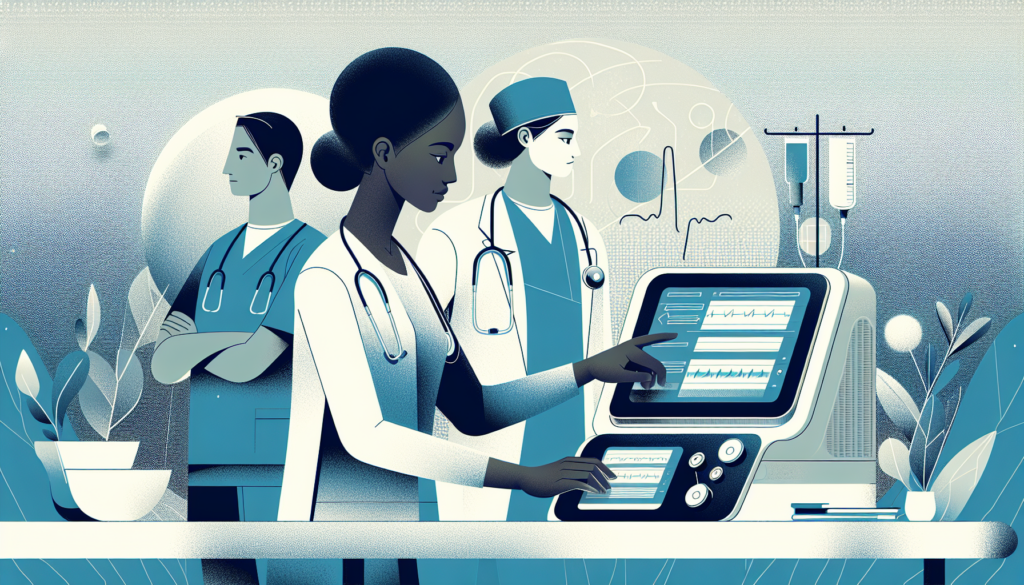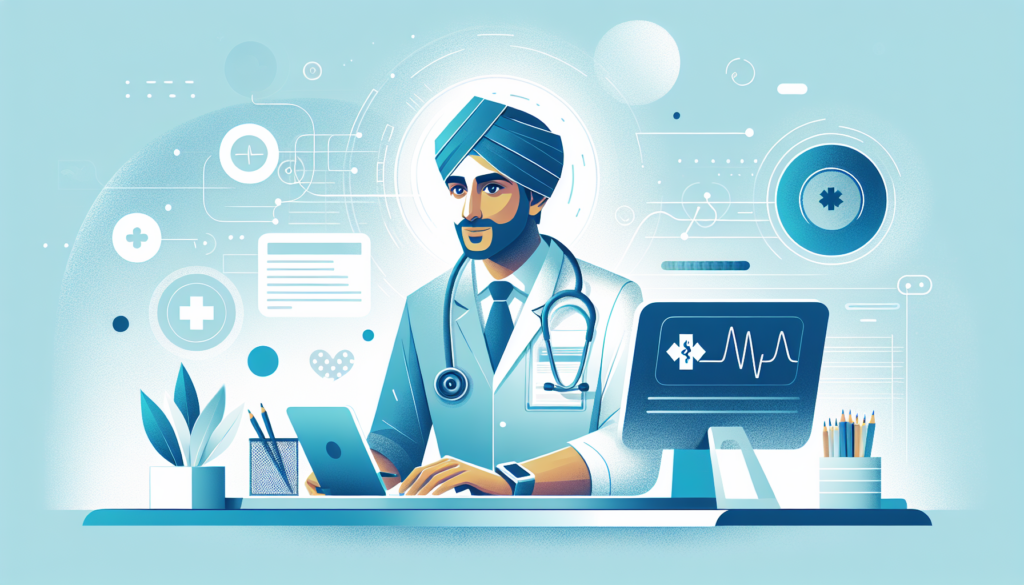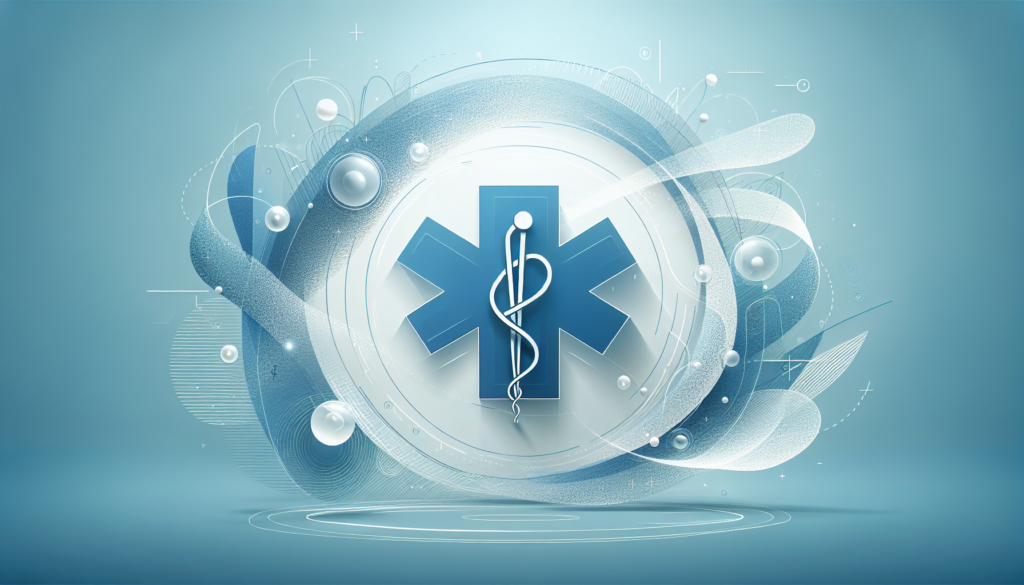Understanding the Role of a Certified Transcriptionist
The landscape of medical documentation is an ever-evolving realm where accuracy and timeliness are paramount. At the heart of this domain stands the certified transcriptionist – a professional whose meticulousness in converting audio recordings into written text is vital to maintaining comprehensive patient records. These individuals undergo rigorous training, mastering medical terminology and the nuances of human speech to ensure that doctors’ dictations are transcribed with the highest fidelity. Their role extends beyond mere typing; it includes interpreting complicated medical jargon and abbreviations while also understanding the legal and ethical requirements of healthcare documentation.
However, the role of a certified transcriptionist does not exist in isolation. It is integrated within a framework of collaboration, often acting as a liaison between healthcare providers and the written medical record. The transcriptionist’s keen eye for detail assists in identifying discrepancies within the documentation that could otherwise lead to potential medical errors. Moreover, their work is a fundamental component in the continuity of care, ensuring that each healthcare provider has access to an accurate history of patient encounters.
– Rigorous training in medical terminology
– High standard of accuracy
– Essential for maintaining comprehensive patient records
– Helps prevent potential medical errors
– Collaborative role ensuring continuity of care
A certified transcriptionist’s ability to adapt to various accents, dialects, and dictation styles is crucial, as they transcribe for a diverse array of specialists, each with their own lexicon. The transcriptionist must be proficient in using transcription equipment and software, managing to balance speed with precision. Their expertise is also assessed through continuous education to keep pace with the shifting paradigms of healthcare practices and the adoption of new terminologies. In many ways, they act as the unsung heroes of healthcare, their contributions often unnoticed yet essential to the delivery of quality care.
– Adapts to diverse accents and dictation styles
– Proficient in transcription equipment and software
– Balances speed with precision
– Requires continuous education for proficiency
Ultimately, the significance of a certified transcriptionist in the medical field cannot be overstated. They play a central role in the creation of a patient’s medical history, a document that can be pivotal in the outcome of medical treatment. This arduous and skilled task not only supports healthcare professionals but also protects patient welfare. With the advent of AI-powered digital scribe technology, such as ScribeMD, transcriptionists now have access to advanced tools that augment their skills and streamline their processes, further enhancing the efficiency and reliability of medical documentation.
– Central to creating detailed patient medical history
– Supports healthcare professionals
– Protects patient welfare
– Access to advanced AI tools to augment skills
Key Takeaways:
| Role of a Certified Transcriptionist | Importance |
|————————————–|——————————————|
| Medical terminology mastery | Essential for precise medical records |
| Detail-oriented | Prevents medical errors and discrepancies|
| Collaborates with healthcare providers| Assures continuity of patient care |
| Adapts to diverse dialects/styles | Accommodates a range of medical specialists |
| Proficient with transcription tech | Balances efficiency with accuracy |
| Continuous education | Keeps up with evolving healthcare practices|
| Augmented by AI technologies | Enhances documentation processes |
Educational Pathways to Becoming a Transcriptionist
The journey toward a career in transcription is rooted in educational foundations that either focus on shorthand writing skills, comprehension of medical terminology, or legal and business language proficiency, depending on the domain of interest. Aspiring transcriptionists can choose between various educational routes, each tailored to augment the individual’s skills to meet industry demands. While formal education is not always requisite, it significantly enhances job prospects and proficiency in the field. For those inclined towards healthcare, understanding the nuances of medical transcription is critical. In contrast, legal transcription requires a firm grasp of legal verbiage and proceedings.
One of the primary steps is pursuing a certificate program dedicated to transcription training. Many community colleges and vocational schools offer programs that can be completed in under a year and provide a solid foundation in transcription essentials. Prospective transcriptionists will learn:
- Keyboarding and word processing
- Audio transcription techniques
- Grammar and punctuation usage
- Transcription styles and formatting
Emphasis is also placed on the confidentiality and ethics required for handling sensitive documents, which is paramount in fields such as medical and legal transcription.
For those looking to delve deeper into the academic domain, an associate’s degree in medical or legal transcription may be pursued. This qualification typically encompasses a broader curriculum over a period of two years and includes general education coursework alongside specialized training. Key components of such programs are likely to cover:
- Advanced medical terminology
- Healthcare documentation and regulations
- Anatomy and physiology for medical transcriptionists
- Legal systems and terminology for legal transcriptionists
These programs often culminate in a practicum or externship, allowing students to gain first-hand transcription experience under professional guidance.
In a rapidly evolving job market, continuing education and certifications can further bolster a transcriptionist’s qualifications. Certification bodies such as the Association for Healthcare Documentation Integrity (AHDI) offer credentials like the Registered Healthcare Documentation Specialist (RHDS) and the Certified Healthcare Documentation Specialist (CHDS), which require passing an exam and maintaining ongoing education. These certifications are testament to a transcriptionist’s commitment to excellence and their possession of skillsets that are particularly valued in the AI-powered digital scribe era, where accuracy is king.
| Key Takeaways |
|---|
| Educational background and certificate programs play a crucial role in building a career as a transcriptionist. |
| Associate degrees offer a more comprehensive training program including practicum experiences, useful for specialized fields like medical or legal transcription. |
| Continuing education and professional certifications from recognized bodies can significantly elevate a transcriptionist’s expertise and employability. |
Necessary Skills and Qualifications for Transcriptionists
Embarking on a career as a transcriptionist demands a specific set of skills to ensure accuracy and efficiency. Primary among these is superior typing skills, with a focus on both speed and accuracy. A transcriptionist should be able to type at a high word-per-minute (wpm) rate while maintaining meticulous attention to detail, ensuring that every word is captured exactly as spoken. Additionally, strong listening abilities are essential, as transcriptionists must be able to decipher various accents, dialects, and nuances in speech, often in the presence of background noise or poor audio quality. These core skills are non-negotiable in the transcription profession, serving as the foundation upon which successful transcription work is built.
Moreover, comprehensive knowledge of the English language, including grammar, punctuation, and spelling, is vital. Transcriptionists must also possess an understanding of the specific domain they are working in, such as legal or medical transcription. This specialization necessitates familiarity with the relevant terminology to avoid inaccuracies in the final transcript. In the medical field, where transcription accuracy can have significant implications, services such as those offered by ScribeMD leverage AI to support transcriptionists in delivering precise and swift results, aiding in the reduction of potential human error. The ability to operate transcription equipment and software effectively, including the use of foot pedals and specialized keyboards, rounds out the technical qualifications required in this field.
- Typing proficiency: High wpm rate and accuracy
- Listening skills: Ability to understand various accents and speech patterns
- Language proficiency: Strong grasp of grammar, punctuation, and spelling
- Specialized knowledge: Familiarity with industry-specific terminology
- Technical skills: Competence in transcription tools and software
Another often overlooked but equally important qualification for transcriptionists is the ability to concentrate for extended periods. This skill is critical given the nature of transcription work, which requires prolonged focus on audio recordings to ensure no details are missed. Time management and organizational skills are also essential, as transcriptionists commonly work with deadlines and must juggle multiple projects efficiently. In an increasingly digital world, transcription services are often integrated into larger platforms. As such, professionals in this sphere should be open to continuous learning and adapting to new technologies, such as integrating with innovative AI-powered digital scribe platforms designed for medical environments like ScribeMD.
Certification Processes for Aspiring Transcriptionists
The road to becoming a certified medical transcriptionist involves dedicated training and the successful completion of certification exams. Prospective transcriptionists must embark on a journey of learning that encompasses medical terminology, anatomy, grammar, and the various legal and ethical requirements of the healthcare documentation industry. Typically, this journey begins with a selection between two primary certification paths: the Registered Healthcare Documentation Specialist (RHDS) and the Certified Healthcare Documentation Specialist (CHDS), both offered by the Association for Healthcare Documentation Integrity (AHDI).
Let’s focus first on the RHDS certification, which is tailored towards those who are new to the medical transcription field. This credentialing process starts with an eligibility check, requiring candidates to have graduated from a medical transcriptionist program or having equivalent work experience. Upon establishing eligibility, aspirants need to prepare for an examination that evaluates their understanding of medical transcription practices and their ability to produce accurate medical records. The exam content revolves around the following areas:
- Medical knowledge: basic concepts in anatomy, physiology, pharmacology, and pathology
- Healthcare documentation standards and practices: actual transcription scenarios that demonstrate practical skills in the profession
- Legal and ethical considerations: HIPAA compliance, patient privacy, and confidentiality protocols
- Data security: ensuring the integrity and security of medical documents
The CHDS certification is designed for transcriptionists with more experience, often requiring that a candidate already holds the RHDS certification or has accrued a set number of years in clinical practice. Beyond similar knowledge areas tested in the RHDS exam, the CHDS also probes a candidate’s ability to interpret, analyze, and provide critical decision-making abilities relative to complex medical cases and documentation requirements. The examination channels encompass:
- Advanced clinical medicine: in-depth understanding of complex medical procedures and treatment plans
- Transcription technology and productivity tools: practical application and troubleshooting of the technology used in the field
- Quality assurance: strategies for maintaining high standards in healthcare documentation
- Risk management, healthcare regulations, and compliance: up-to-date knowledge on policies and evolving legalities that impact the practice
Through these rigorous certification processes, aspiring transcriptionists not only validate their competencies but also demonstrate a robust commitment to excellence in the field. Healthcare providers, in turn, can rest assured knowing that their medical documentation needs are managed by professionals who have met universally respected industry standards. Scribemd.ai, our AI-powered digital scribe, aligns perfectly with these high standards, offering a seamless platform where certified transcriptionists enhance accuracy and efficiency in medical documentation. Embracing such advanced technologies after certification further optimizes the transcriptionist’s role, ensuring a future-proof career in an ever-evolving healthcare landscape.
Building Your Career as a Certified Transcriptionist
Becoming a certified transcriptionist represents a commitment to accuracy, confidentiality, and speed in converting audio records to written text. The pathway to building a career in this meticulous field involves obtaining certification from a reputable organization, which signals to employers your proficiency in this skilled domain. Certification often encompasses knowledge of medical or legal terminology depending on the specialization, and highlights a transcriptionist’s dedication to ongoing education and professional standards. It is not just a badge of expertise but a clear message of reliability to potential clients and employers.
Preparation for certification typically requires specialized training. Courses can range from certificate programs offered by community colleges to online training programs that provide flexibility for busy schedules. These programs cover a variety of essential skills such as:
– **Understanding and interpreting complex terminology**
– Learning to transcribe with the aid of industry-standard software tools
– Mastering the use of transcription equipment
– Enhancing typing speed and accuracy
– Developing listening skills for clear audio interpretation
Each factor plays a crucial role in ensuring the precision required for successful transcription work.
After training, real-world experience is imperative. Many transcriptionists start their careers by working on a freelance basis or by seeking positions in companies that do not require certification but necessitate a demonstration of skill. This phase allows for the honing of abilities, understanding the nuances of audio-to-text conversion, and developing a professional rhythm. Specialty fields such as medical or legal transcription may demand further experience due to their technical nature and the consequences of inaccuracies in transcribed documents.
Finally, the step of certification involves passing a comprehensive exam that assesses a range of competencies:
– **Proficiency in language and grammar**
– Familiarity with transcription software and hardware
– Awareness of privacy laws and ethical guidelines, especially for sensitive fields like medical transcription
Successful certification opens doors to higher-paying jobs, the possibility of consistent work from trusted clients, and a respected stature within the transcription community. Aspiring transcriptionists should also consider joining professional associations, which often provide resources for certification, continuing education, and networking opportunities that are vital for career advancement.



